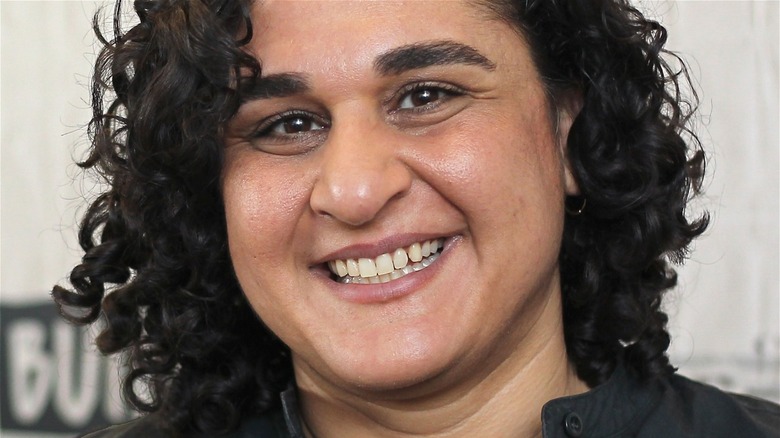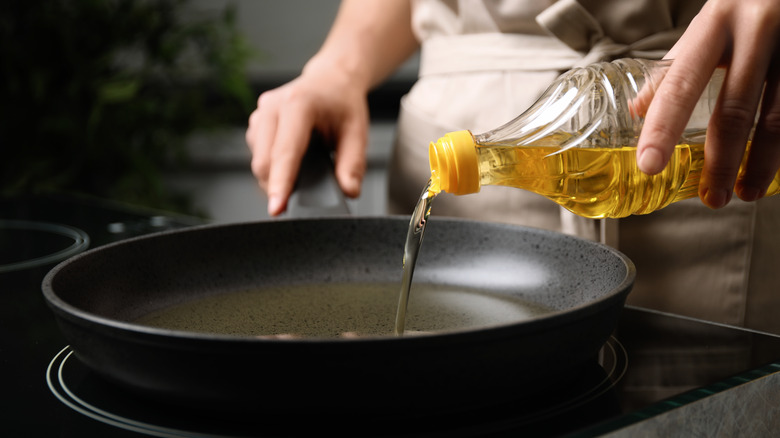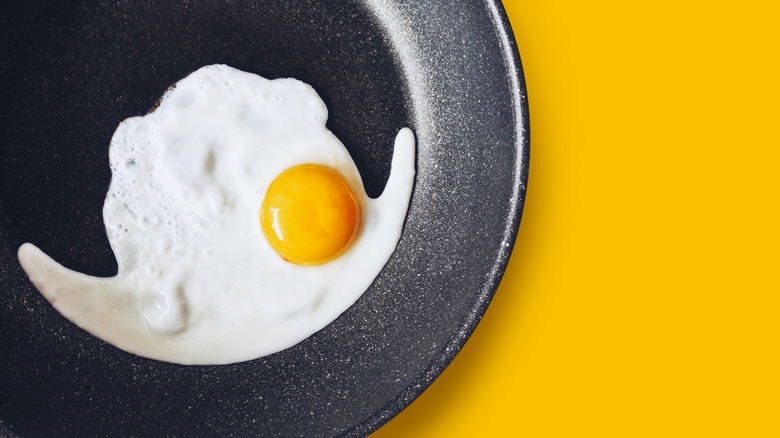The Pan Cooking Rule Samin Nosrat Swears By
In Samin Nosrat's Netflix special, "Salt, Fat, Acid, Heat," adapted from her award-winning, bestselling cookbook by the same name, she defines these four elements that "make or break a dish". In the four-part show, Nosrat travels the world exploring prime examples of salt, fat, acid, and heat in Shodo Island (Japan), Liguria (Italy), Yucatán (Mexico), and at her home in Berkeley, California, respectively.
In her show, she embodies both an inquisitive student and a knowledgable expert, connecting the dots between her extensive culinary experience and gathering newfound discoveries from experts along the way. There are many practical tips and tricks the home cook can take from Nosrat — like salting meat in advance, marinating meat in acid to tenderize, and that home ovens are hottest in the back — but there is one important pointer that stands above the rest.
"This is one of those important things that I think home cooks forget, is how important it is to preheat the pan," Nosrat said. "You have to heat the pan before you heat the oil."
Why you should heat the pan before adding oil
Samin Nosrat claims that preheating the pan before adding oil is one of the most important things home cooks forget, but why? Cooking involves manipulating ingredients, which yes, includes food, but also temperature and time. This is where science and chemistry come in.
In a 2008 edition of the New York Times "Diner's Journal," Blog, Harold McGee — an author and expert on the science and history of cooking — explains why Nosrat's suggestion is the way to go. "The longer the oil spends in contact with the hot surface, especially metal, the more time it has to be broken down by the extreme conditions and exposure to oxygen," McGee said, adding that overheated oil can turn "gummy" and even cause food to stick.
Culinary Institute of America assistant professor David Bruno told the Times Union that it's less about food sticking and more about the "polymers" that form when oil is exposed to heat for too long. "When you start oil in a cold pan, it's exposed to heat for a longer period and it can break down faster, which affects taste," Bruno said.
This is especially true of unseasoned cookware like stainless steel, according to the North American Olive Oil Association. This is because pans have microscopic cracks and grooves and when oil is added to the hot pan, it alters the viscosity of the oil and allows it to settle into these surface imperfections. There seems to be consensus across the board about preheating stainless steel pans and cast iron pans, like Nosrat suggests, but you shouldn't preheat all pans.
What pans you shouldn't preheat
According to Food & Wine's Max Bonem, non-stick pans are not meant to be heated without at least some fat in the pan because non-stick surfaces can release toxins. "Every young cook is told to let their pan heat up before adding any cooking fat to it, but the opposite is true when using nonstick," Bonem writes. He suggests that when cooking with these types of pans, "you should add oil or butter to the pan as soon as it's exposed to heat," noting that "cooking fat actually amplifies the [nonstick] coating's effect when added to the pan before the food."
Ultimately, Samin Nosrat gives great advice to home cooks to preheat certain cookware — like cast iron and stainless steel pans — before adding oil, and her recommendation is echoed by many other experts. However, it's important to remember that this advice excludes non-stick pans, which should never be heated without oil or butter in the pan.


